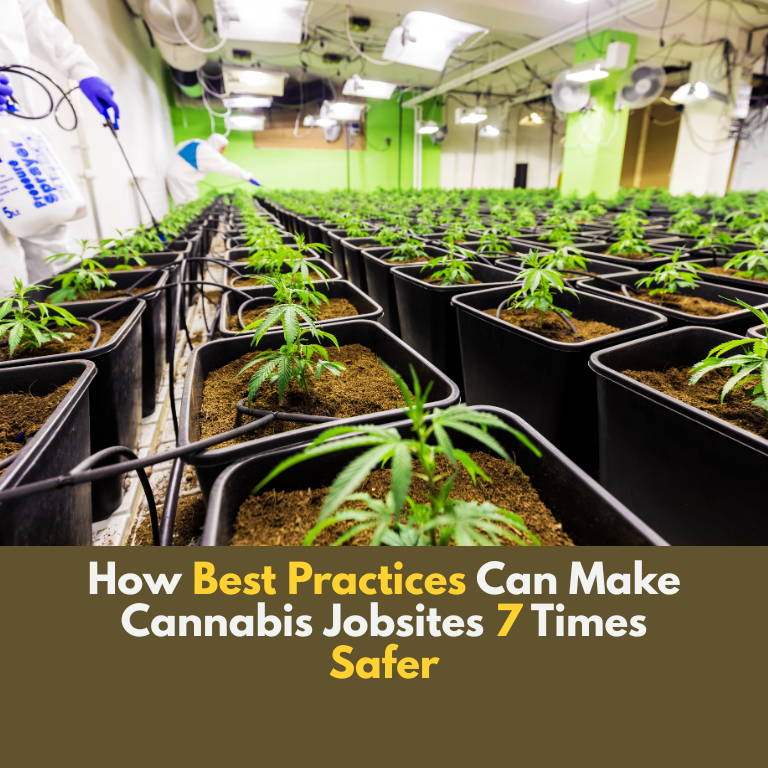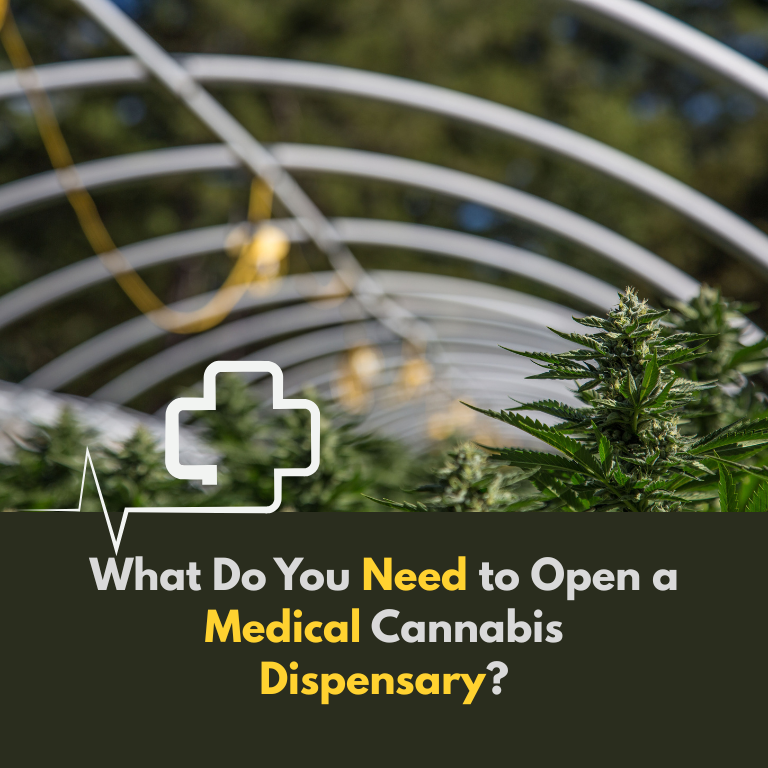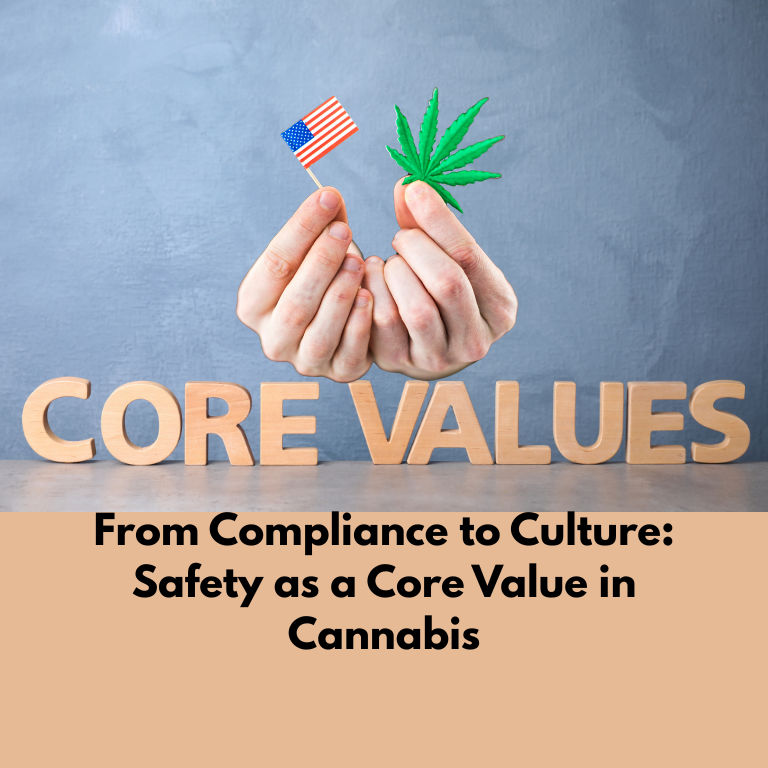The cannabis industry is growing rapidly, with more businesses entering the market to meet the increasing demand for both medicinal and recreational cannabis products. As the industry matures, ensuring a safe and compliant work environment has become crucial, particularly in high-risk environments like cannabis cultivation facilities, manufacturing labs, and dispensaries. The cannabis industry is regulated by both state and federal laws, but within this framework, companies must also implement best safety practices to protect their employees.
When it comes to safety on cannabis jobsites, research and experience show that following established best practices can make these environments up to seven times safer. These safety protocols are not only a legal requirement but also critical for fostering a healthy and productive workplace. In this article, we’ll explore how following safety best practices can drastically improve safety in the cannabis industry and protect workers from accidents, injuries, and potential legal risks.
Implementing Comprehensive Training Programs
A well-trained workforce is the first line of defense against accidents and injuries in any workplace. In the cannabis industry, it’s especially important to provide employees with comprehensive safety training. This includes not just the basics of how to use equipment and handle materials but also an understanding of specific safety protocols related to cannabis cultivation, processing, and retail operations.
For example, workers in cultivation facilities should be trained on the proper use of pesticides and fertilizers, while manufacturing employees need to be aware of the risks associated with handling volatile chemicals. Dispensing staff should be knowledgeable about the state’s cannabis laws and regulations to ensure compliance, which helps prevent accidents and legal issues down the line.
Training should cover general workplace safety guidelines, such as:
Proper lifting techniques
Fire safety and emergency procedures
Handling hazardous chemicals
Equipment operation and maintenance
First aid and CPR
Regular training updates and refresher courses should also be part of the strategy to keep employees informed about new safety protocols and industry best practices. A properly trained workforce reduces the likelihood of injuries and accidents, making the jobsite much safer.
Safety Protocols for Handling Cannabis Products
In the cannabis industry, the products themselves can pose various safety risks. Whether dealing with raw cannabis plants, concentrates, edibles, or other cannabis-derived products, ensuring proper handling is essential.
At cultivation sites, for instance, employees should be trained to safely handle and dispose of plant waste, which can carry fungal spores or other contaminants. These contaminants can lead to illnesses if not properly managed. Additionally, manufacturing facilities need robust safety protocols in place to address the risk of fires, explosions, and chemical exposure, especially when working with cannabis concentrates or extracts.
On the retail side, dispensary employees must take extra care when handling cannabis products, ensuring that they are stored correctly, safely transported, and disposed of appropriately.
Best practices for handling cannabis products include:
Storing products in cool, dry, and secure environments
Using proper PPE (personal protective equipment) when handling cannabis or chemicals
Following safety data sheets (SDS) for all chemicals and products used
Using proper labeling and warning signs to ensure that hazardous materials are easily identifiable
By implementing these practices, businesses can reduce the risk of accidents, contamination, and even theft or loss of inventory, which could lead to larger safety or legal issues.
Regular Inspections and Maintenance of Equipment
Cannabis cultivation, manufacturing, and retail environments often rely on specialized equipment, such as HVAC systems, extraction machines, lighting rigs, and security systems. Equipment failure can lead to safety hazards such as fires, leaks, or electrical shocks. For example, improperly maintained HVAC systems in grow rooms could lead to high humidity, which may promote mold growth on plants. Similarly, extraction machines that aren’t properly calibrated or maintained could malfunction and cause an explosion.
A proactive approach to equipment maintenance is critical to keeping cannabis jobsites safe. Regular inspections and maintenance schedules can identify problems early before they lead to safety issues.
Best practices for equipment safety include:
Regular inspection and servicing of equipment
Establishing a schedule for maintenance, with records kept for future reference
Implementing a lockout/tagout system for machines that need to be serviced or repaired
Ensuring that employees are trained on how to use equipment properly
By staying ahead of potential equipment malfunctions and keeping machines running smoothly, businesses can reduce the risk of accidents and maintain a safer work environment.
Ensuring Fire Safety
One of the most significant risks in cannabis facilities, particularly in cultivation and extraction, is the potential for fire. Cannabis facilities often deal with highly flammable materials like alcohol, butane, and other chemicals used in extraction processes. Grow rooms with high-intensity lighting systems also pose a fire risk, especially when these systems aren’t regularly checked for wear and tear.
Cannabis businesses must prioritize fire prevention strategies to protect both employees and the facility itself. Best practices for fire safety include:
Installing smoke detectors and fire suppression systems in key areas
Storing flammable chemicals in fireproof cabinets or areas
Conducting fire drills regularly to ensure everyone knows emergency procedures
Ensuring proper electrical wiring and grounding in all areas, particularly around grow lights and extraction machines
Properly training staff on fire safety protocols and the use of fire extinguishers
In the event of a fire, quick action can save lives and prevent significant property damage. By prioritizing fire safety, cannabis companies can make their jobsites up to seven times safer.
Ensuring Employee Mental Health and Well-being
Employee safety isn’t just about preventing physical injuries; mental health plays a critical role in creating a safe work environment. Cannabis workers often face high-stress situations, especially in fast-paced environments or during periods of regulatory changes. High levels of stress can lead to burnout, accidents, and decreased job performance.
Employers in the cannabis industry must make employee mental health a priority. Providing a supportive work environment, offering access to mental health resources, and encouraging open communication can go a long way in preventing workplace accidents caused by stress or mental fatigue.
Best practices for supporting mental health on cannabis jobsites include:
Offering employee assistance programs (EAPs) for counseling and mental health support
Creating a positive workplace culture that promotes well-being and reduces stress
Encouraging regular breaks and promoting a healthy work-life balance
Providing training on stress management techniques
By supporting employees’ mental health, cannabis businesses can reduce the likelihood of accidents related to stress, fatigue, or poor decision-making.
Creating Clear Safety Policies and Procedures
A written set of safety policies and procedures ensures that every employee understands their role in maintaining a safe work environment. These policies should address all aspects of the cannabis business, from product handling to emergency procedures. Clear, comprehensive safety manuals and documented procedures provide a reference for employees to follow and help reduce confusion or errors in high-pressure situations.
Best practices for safety policies include:
Establishing a comprehensive safety manual and making it accessible to all employees
Conducting regular safety meetings to reinforce policies and procedures
Encouraging employees to report safety hazards or concerns without fear of retaliation
Reviewing and updating policies regularly to ensure they are in compliance with industry standards and regulations
Safety is a fundamental concern for any business, and the cannabis industry is no exception. By implementing best practices in training, equipment maintenance, fire safety, mental health, and clear safety policies, cannabis jobsites can be made significantly safer. Up to seven times safer than without these practices. These measures not only protect employees but also help cannabis businesses operate more efficiently and comply with state and federal regulations. With safety at the forefront, cannabis businesses can create a work environment that fosters productivity, reduces risk, and prioritizes the well-being of all employees.















